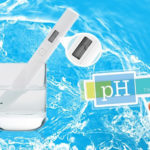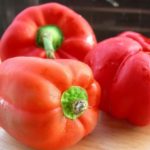
Washing fruits and vegetables in a dishwasher can have an impact on health. Photo: Alamy.
Most of us wash fruits and vegetables with tap water, but a new kitchen tip has been passed on by housewives, raising the food hygiene to a new level: Washing fruits and vegetables with a dishwasher.
On the dishwasher and household appliance group, a user shared many pictures of washing fruits in the dishwasher, from thick-skinned fruits like dragon fruit, mangoes to oranges, lemons, and even raw vegetables. These images have caused controversy, with many members of the group expressing surprise at this use of the dishwasher.
Using the dishwasher to wash fruits was a trend on TikTok, with arguments in videos that dirt and pests would be completely removed from vegetables and fruits, just by putting them in the dishwasher. The origin of this trend was the user @smilelop.
She placed apples, kiwis, grapes, lemons, celery and many other fruits on the same dishwasher shelf. Then, she arranged pineapples, papayas, two cucumbers, and various other berries in the bottom drawer and pressed the start button.
“Thanks for sharing this useful tip! This way is much easier than washing by hand,” a commenter wrote below.
However, experts recommend not washing fruits and vegetables with a dishwasher because it not only damages the dishwasher or fruit, but also harms yourself.
Risk of damaging the dishwasher
For fruits and vegetables with sand or a lot of dirt, you should not put them in the dishwasher to clean because the sand can get trapped under the wastewater container, enter the pump system, and drain.
They will then clog or stick to the pump blade. At this point, the motor will not stop immediately but still continues to operate, which can cause overloading and burn the inner coil of the motor.
If you wash them with a dishwasher, most of the bacteria, worms, or parasites on the fruits and vegetables will be flushed into the drainage system. However, sometimes there may be parasites lurking in the crevices or inside the machine. When you wash the dishes and cutlery in the opposite direction, it will harm your health when you use them.

Users show pictures of using a dishwasher to wash various types of vegetables and fruits. Photo: Son Pham Hung.
The user @smilelop also poured vinegar into the regular cleaning solution container. Vinegar is still commonly used during the cleaning process of dishwashers, but it can also cause rubber parts inside the machine to deteriorate faster.
Harmful to humans and fruits
In addition to damaging the machinery, the health risks to users are even more concerning. When putting fruits into the dishwasher, many people instruct to use the rinse mode, cold water, and even put vinegar in the cleaning solution container, just like washing by hand.
However, dishwashers have undergone hundreds of washes with the detergent, and if not cleaned regularly, the residue from soap and cleaning agents may still be present inside the dishwasher.
“The biggest difference is that dishes don’t have a permeable surface and you won’t eat them. Meanwhile, fruits and vegetables are what you directly consume, and the rate of absorption will vary depending on the type,” said Jason Bolton, professor of agriculture and food safety expert at the Maine Cooperative Extension.

Washing fruits and vegetables in a dishwasher does not necessarily make them cleaner. Photo: smilelop.
If washed using a dishwasher, the various types of produce can absorb soap. According to the US Department of Agriculture, consumers should not wash fruits and vegetables with detergents or soap.
“Consumers can eat dirt from soap or cleaning agents absorbed on the product and become sick,” the Department of Agriculture stressed.
“In some cases, soap has different chemicals than those the body can absorb,” Professor Jason Bolton said.
Washing with a dishwasher can leave behind residues and chemicals, causing irritation to the digestive system, leading to nausea or diarrhea. It can even kill beneficial bacteria in the gut.
If you are not careful, you may forget to set the dishwasher to the cold-water mode. The water temperature in the dishwasher ranges from 50-70 degrees Celsius, which can soften or even cook the fruits inside.
Therefore, the advice of experts is to simply wash fruits and vegetables under running water as usual. According to Ben Chapman, professor and food safety expert at North Carolina State University, clean water can remove 90-99% of bacteria such as E. coli, salmonella, listeria…
“Using very hot or very cold water can cause the bacteria you are trying to wash away to absorb,” Professor Jason Bolton said.

It is best to wash fruits and vegetables under clean running water. Photo: iStock.
You can use a brush to remove sand on hard vegetables or fruits with thick skin to minimize dirt, bacteria, and pesticides. Experts recommend washing and sanitizing the brush regularly.
For more delicate produce, you should gently wash it by hand. Drying the product with a clean dishcloth or paper towel is another important step to help remove pollutants.
As for vegetables, the advice is to wash them under running water or soak them in a basin of cool water. Leafy greens and other types of vegetables should be separated into individual leaves and washed or soaked separately in a basin for a few minutes, then rinse thoroughly.
In conclusion, the advice of Bolton and the research group is: “Persist in using water to clean fruits and vegetables.”
According to Knowledge Magazine














